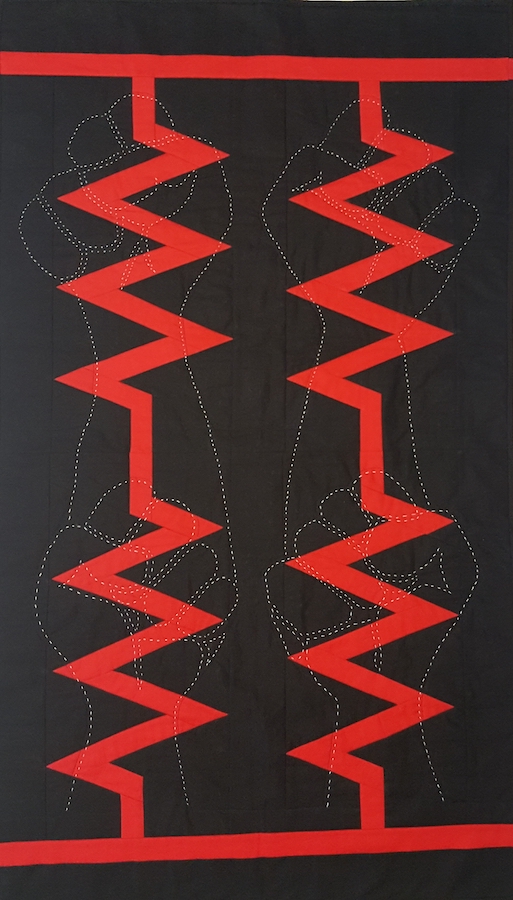Chandra Wu
Resistors
cotton fabric, machine-pieced, machine and hand stitched
42 x 24.5 in.
Resistance that represents a fight for freedom, human rights, and respect for all peoples can also be troubled by poor circuit design. As the number of resistors grows, they can become less effective depending on how they are organized within the circuit. Less extreme supporters limit the radicalism of a movement. A high school student shouting down the flag-burning exercise of the Revolutionary Communist Party during a protest of first Iraq war, or the white “Becky” in a pink pussy hat assaulting a woman of color on the train to the 2017 Women’s March remind us that individuality can work against the goal of resistance movements. In many cases centering on one’s self undermines the resistance by failing to reinforce it at important intersections or draining the circuit of energy.
I have failed to do my part as a white resistor many times from privileged indifference or fear of performance mistakes, although I oppose the growing current of totalitarianism and white nationalism and want to be part of “the circuit.” I see symbols in electrical circuit diagrams as a semaphore for the digital information age enabling communication all over the world. The exploration of circuit components has been finding its way into my sketchbook even before the 2016 election. People learn from each other via the growing stream of electronic information they inhabit. Resistors, transformers, amplifiers, power sources and transmitters tell a story of individual components working to oppose fascism and expose propaganda to truth.
© Chandra Wu


